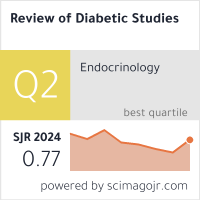The impact of implementing physical and mental fitness programs on the ability of paramedics to deal with natural disasters in the Kingdom of Saudi Arabia
DOI:
https://doi.org/10.70082/t55qc115Keywords:
Physical fitness - Mental fitness - Paramedics - Natural disasters - Field readiness – Psychological resilience - Speed of response - Saudi Red Crescent Authority.Abstract
This research aims to analyze the impact of applying physical and mental fitness programs on the ability of paramedics to deal with natural disasters in the Kingdom of Saudi Arabia, through a field study that included a sample of (200) paramedics working in field ambulance sectors. The researcher used the descriptive analytical approach and a questionnaire tool that included (13) items to measure the level of physical and psychological efficiency and speed of response during disasters. The results showed that the arithmetic means ranged between (4.09 - 4.30), which reflects a high level of agreement on the effectiveness of these programs in improving the performance of paramedics and raising their ability to make decisions under pressure. The results of the correlation coefficient also showed a strong direct relationship between the elements of physical and mental training, while the value of the reliability coefficient (Cronbach's alpha = 0.91) showed high internal consistency, indicating the reliability of the research tool. The results of the one-way analysis of variance (ANOVA) test indicated that there were statistically significant differences attributable to years of experience, as those with high experience showed greater agreement with the importance of these programs, while the results of the t-test did not show differences attributable to gender. The study confirms that integrating physical and mental fitness programs into mandatory training for paramedics is a strategic step toward enhancing field preparedness and psychological resilience during disasters. It also recommends developing the content of these programs to reflect the nature of local risks, and conducting future studies to measure their impact on the effectiveness of national crisis response.
Downloads
Published
Issue
Section
License

This work is licensed under a Creative Commons Attribution-ShareAlike 4.0 International License.


